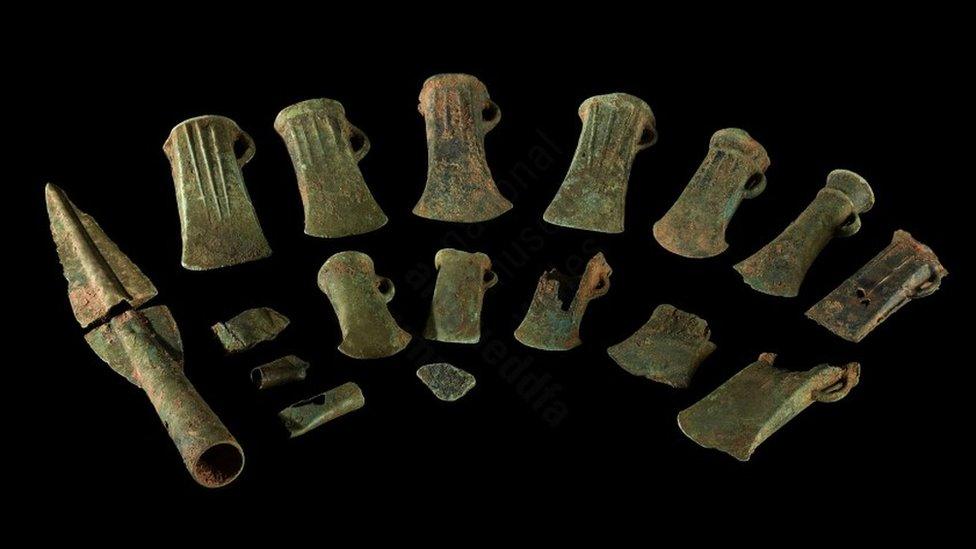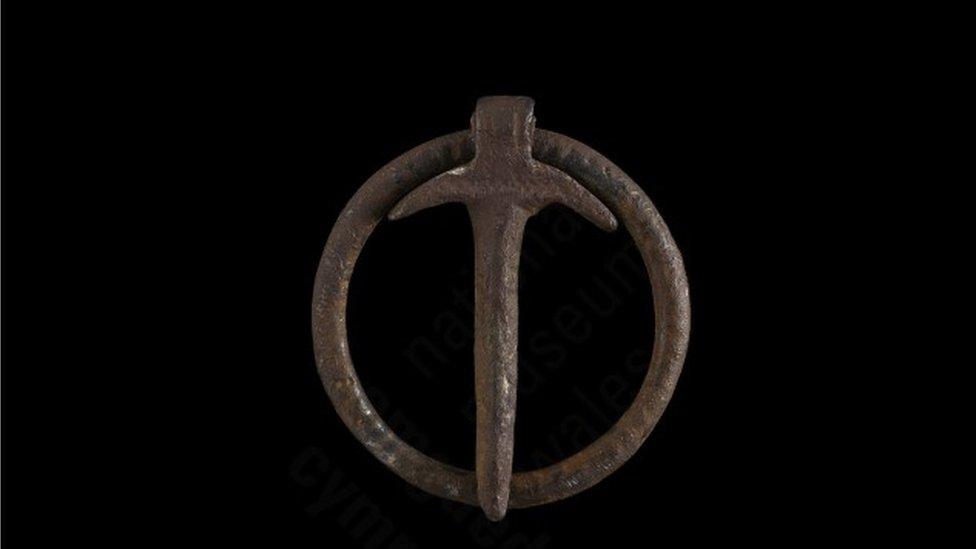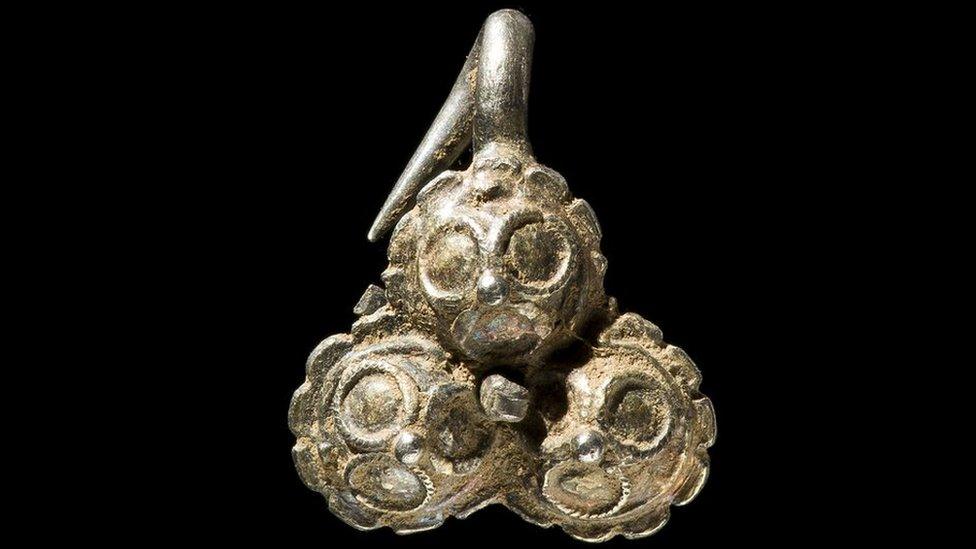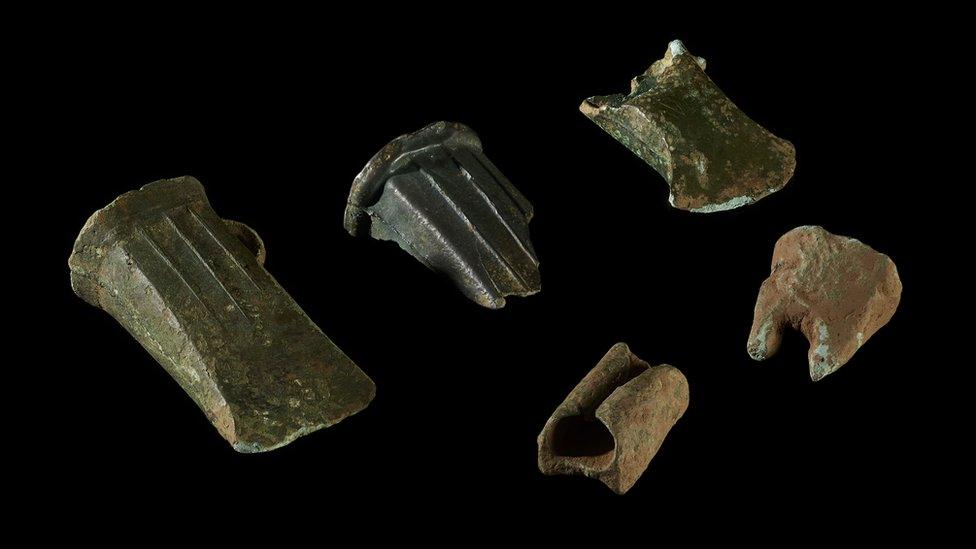Treasure find of Bronze Age axes and spears from 1,000 BC
- Published

Carmarthenshire council hopes the finds can go on display to the public
A Bronze Age hoard of axes, spear and bracelet fragments dating back to about 1,000 BC have been declared treasure.
Richard Trew made the finds while metal-detecting in Llanddeusant, Carmarthenshire between 14 and 22 November 2020.
Archaeologists from National Museum Wales believe the 20 items were buried in a specially-dug pit, which could have been a sacrifice to the gods.
Coroner Paul Bennett declared the find treasure on Friday.
In all, one large spearhead, three small spear fragments, a bracelet fragment, nine ribbed socketed axes, two plain socketed axes, one faceted axe, two sheet bronze fragments and a casting jet were found.
They date to between 1,000 and 800 BC, the museum said.
Mr Trew said: "I felt as though I was taken back in time, no other words can describe it.
"I couldn't stop laughing as I kept finding more objects. I will never forget the moment and it will be with me forever."
Doctoral student Christopher Griffiths said Mr Trew's actions in reporting the find and documenting it meant more of the story behind the hoard could be revealed, with it buried in a specially-dug pit far from a local settlement.
"The large bronze spearhead, struck with a blunt tool and snapped in half prior to its burial, was carefully placed at the top of this hoard," he said.
"It is possible that the breaking of the spearhead and the burial of the hoard was carried out during a ceremony held by a local Bronze Age community, intended as a sacrifice to the gods."

A 16th century pendant is one of three items declared as treasure
Carmarthenshire council's museums curator Gavin Evans said he hoped it could acquire the finds and add them to its growing archaeological collection for the public to view.
"The hoard, with its large spear and complete axes, is visually impressive and could form a strong new display element on the Bronze Age, drawing on the story of both the finder and the archaeologists who have recently investigated the find," he said.

A medieval brooch was one of three finds declared treasure recently
The council also hopes to acquire two other items declared as treasure - one was a Tudor period silver-gilt pendant found by David Edwards in Llangeler in November 2020.
It is heart-shaped and decorated with a bleeding wound design representing Christ's wound - this personal ornament, a symbol of Catholic faith, dates to the mid-16th century, at a turbulent time of conflicting views held by opposed Church of England and Roman Catholic faiths.
A medieval silver annular brooch was found by Rafal Pacholec while metal-detecting in Pontyberem in September 2020.
Related topics
- Published10 January 2022

- Published6 August 2021
